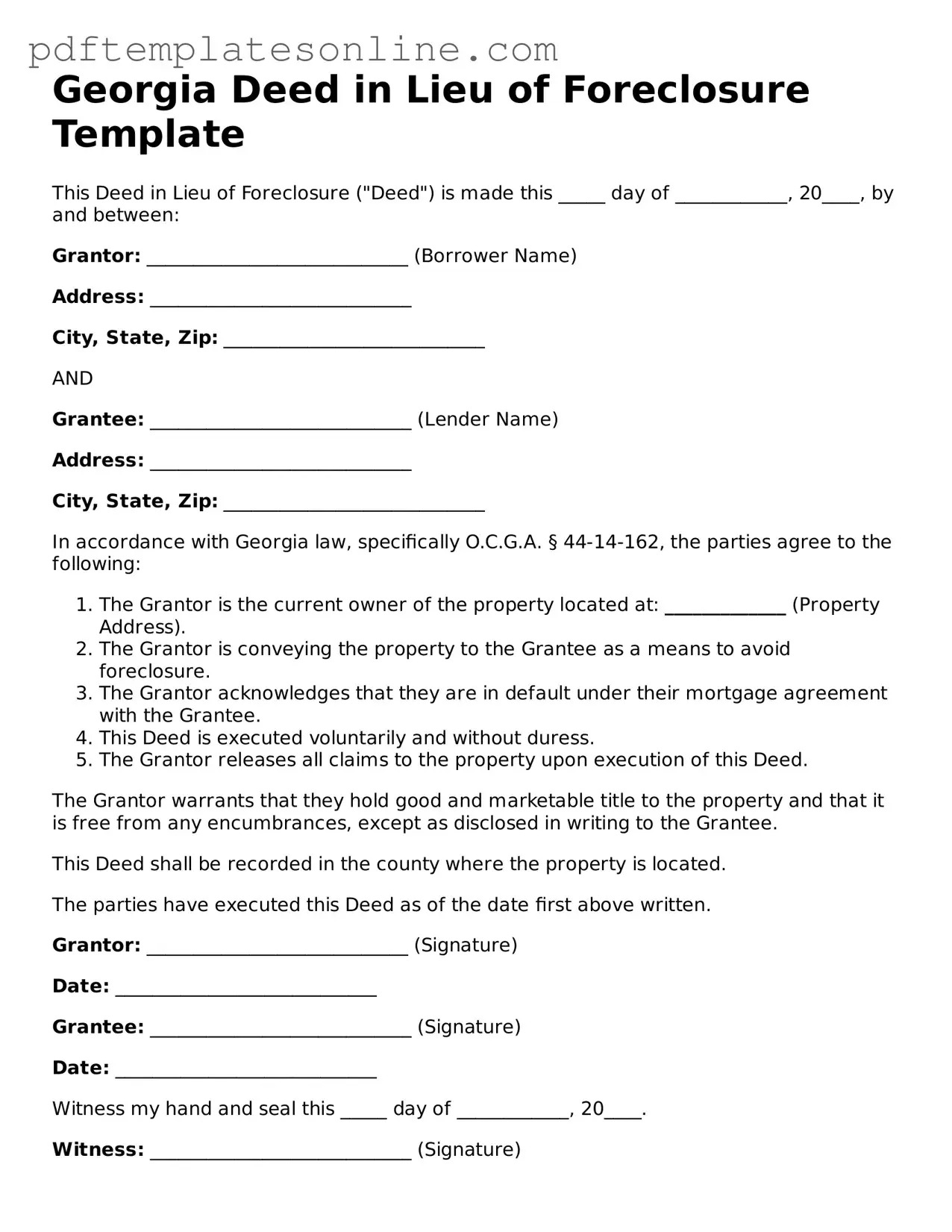When filling out the Georgia Deed in Lieu of Foreclosure form, many individuals make critical errors that can complicate the process. One common mistake is failing to provide accurate property descriptions. The legal description must match what is recorded in the county records. If it doesn't, the deed may be deemed invalid.
Another frequent error is neglecting to include all necessary signatures. Both the borrower and the lender must sign the document for it to be legally binding. Missing a signature can lead to delays or even the rejection of the deed.
People often overlook the need for notarization. The deed must be notarized to ensure its authenticity. Without a notary's seal, the document may not hold up in court, potentially leaving the borrower still liable for the mortgage.
Many individuals also fail to understand the implications of the deed. They might assume it absolves them of all debt, but this is not always the case. It’s crucial to clarify whether any deficiency judgments can still be pursued by the lender after the deed is executed.
Another mistake is not providing a full financial disclosure. Lenders typically require a complete picture of the borrower's financial situation. Omitting details can lead to misunderstandings and may affect the lender's decision.
People sometimes rush through the form, leading to typographical errors. Simple mistakes, like misspelled names or incorrect dates, can cause significant issues. Take the time to review the document thoroughly before submission.
Additionally, failing to communicate with the lender can be detrimental. Some borrowers submit the deed without confirming that the lender is willing to accept it. Open communication can prevent unnecessary complications.
Individuals may also ignore the tax implications of a deed in lieu of foreclosure. It's essential to consult with a tax advisor to understand how this action may affect tax liability, as it could result in taxable income.
Lastly, not keeping copies of all submitted documents is a common oversight. Always retain copies for personal records. This documentation can be crucial if any disputes arise in the future.
By avoiding these mistakes, individuals can navigate the Deed in Lieu of Foreclosure process more effectively. Careful attention to detail and open communication with all parties involved are key to a smoother transition.
